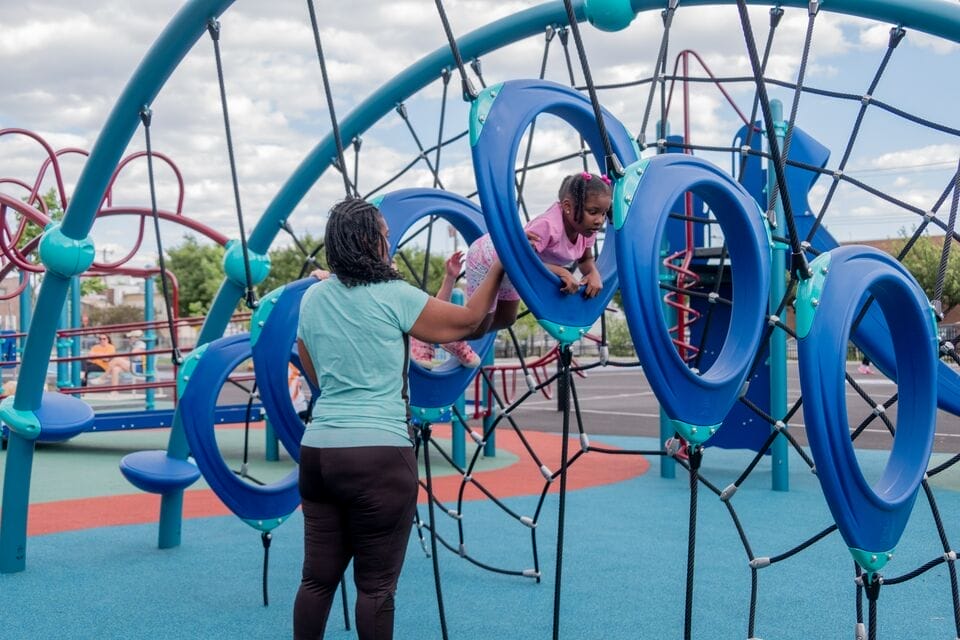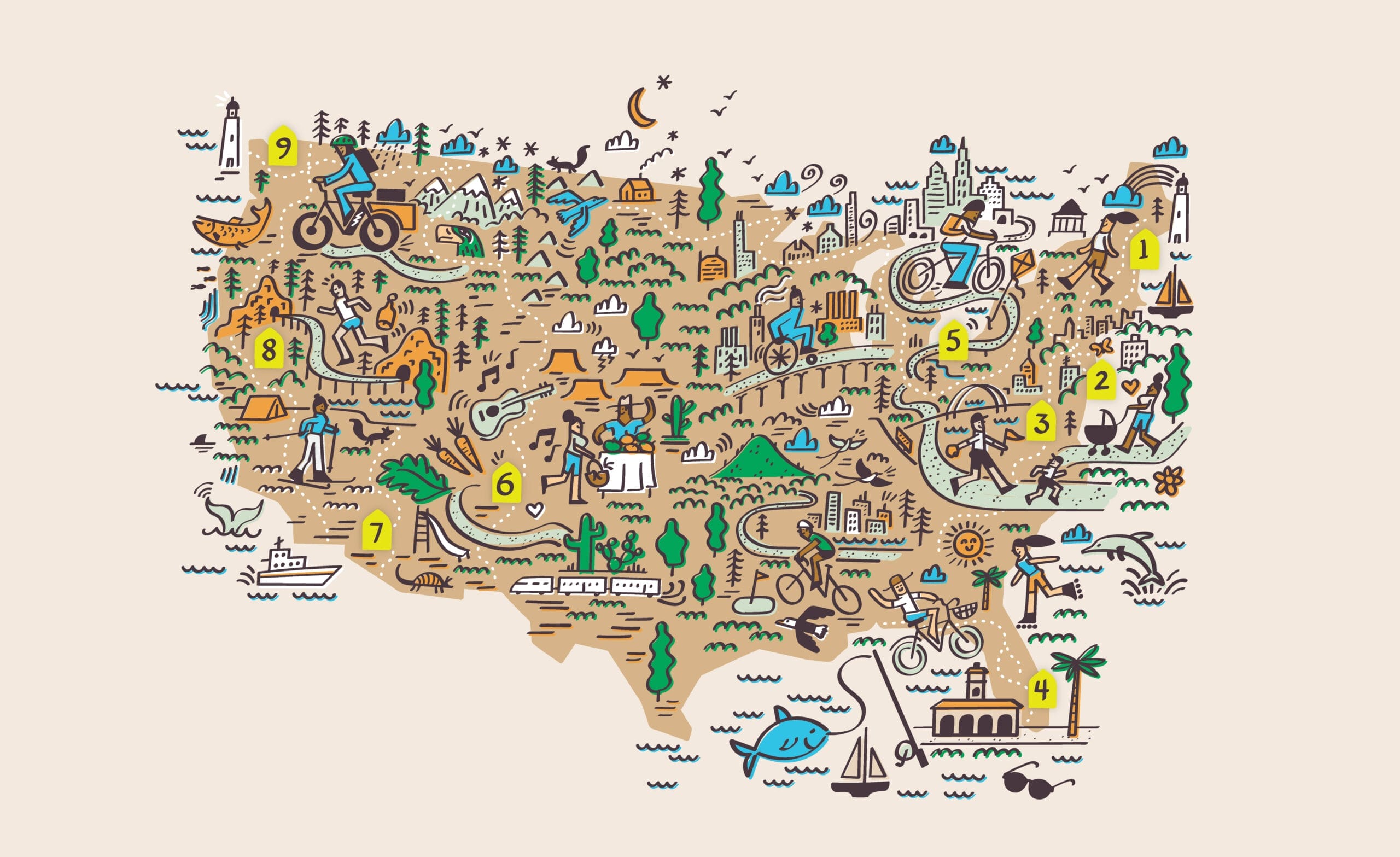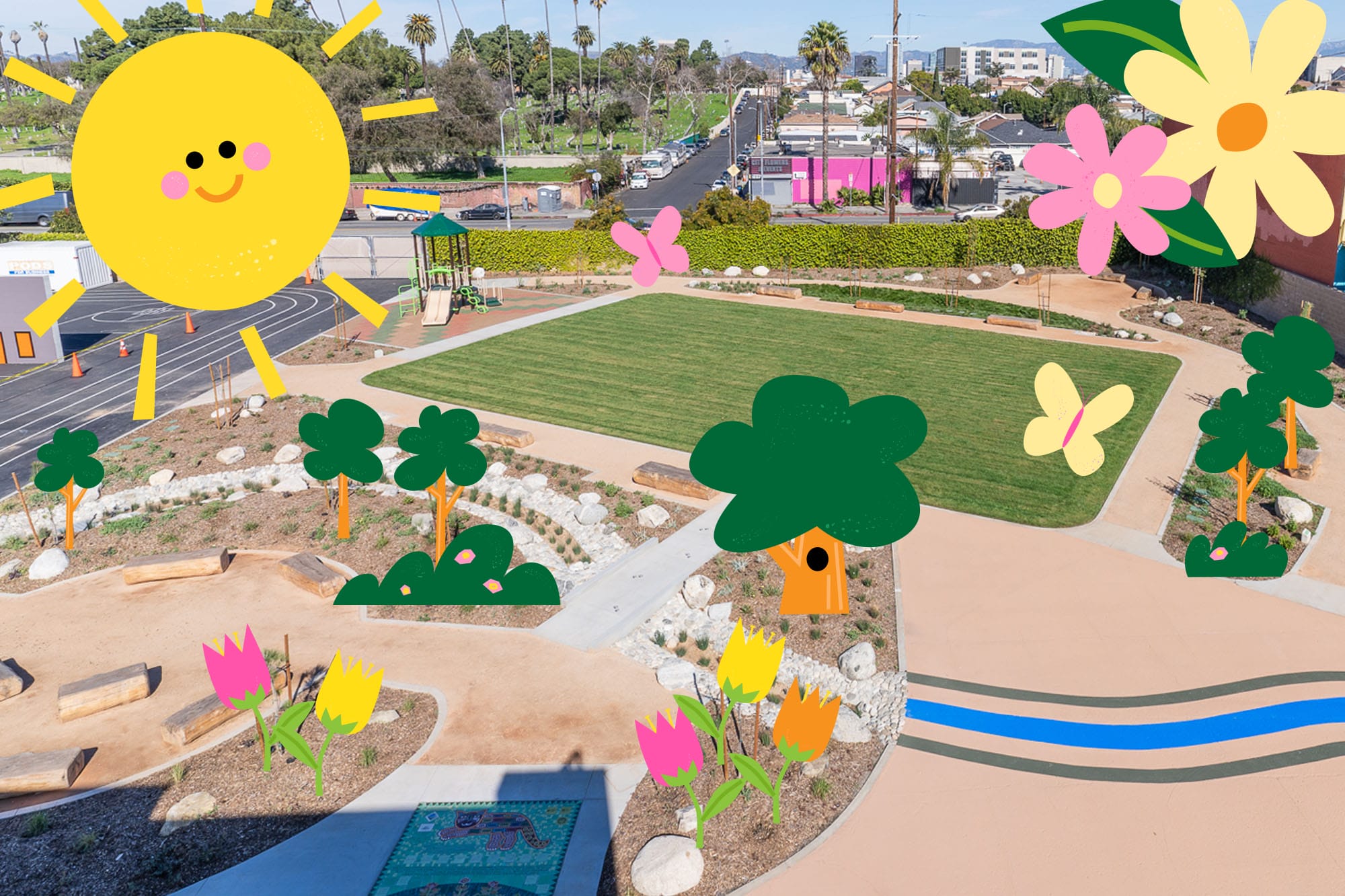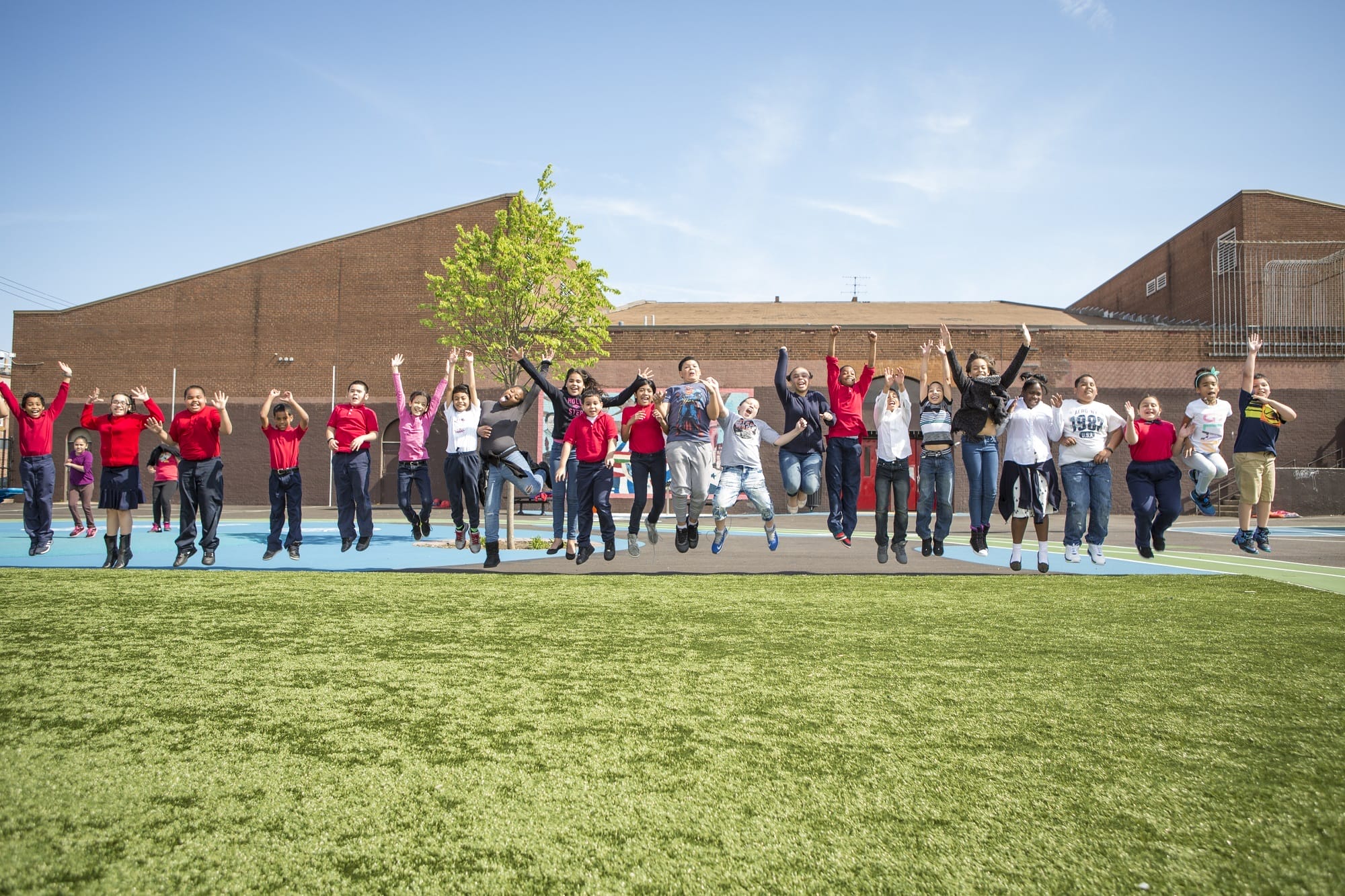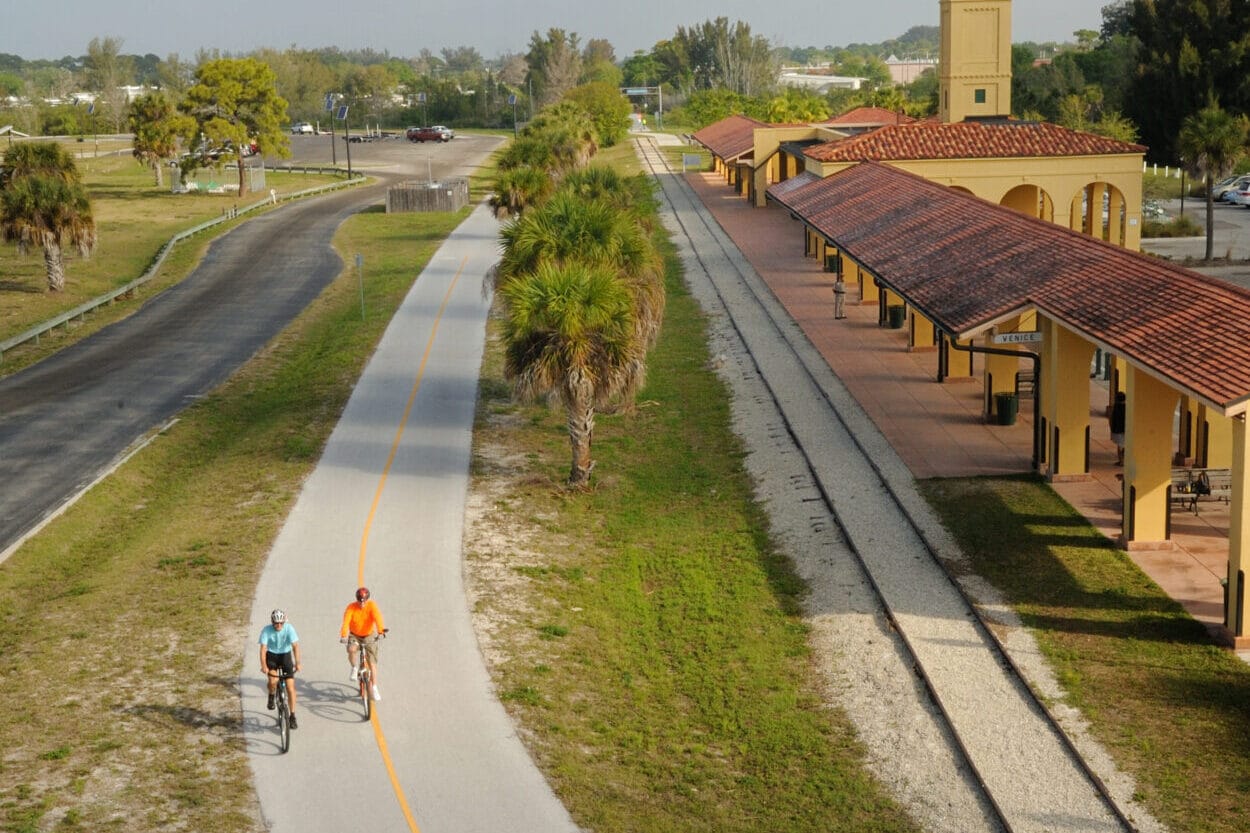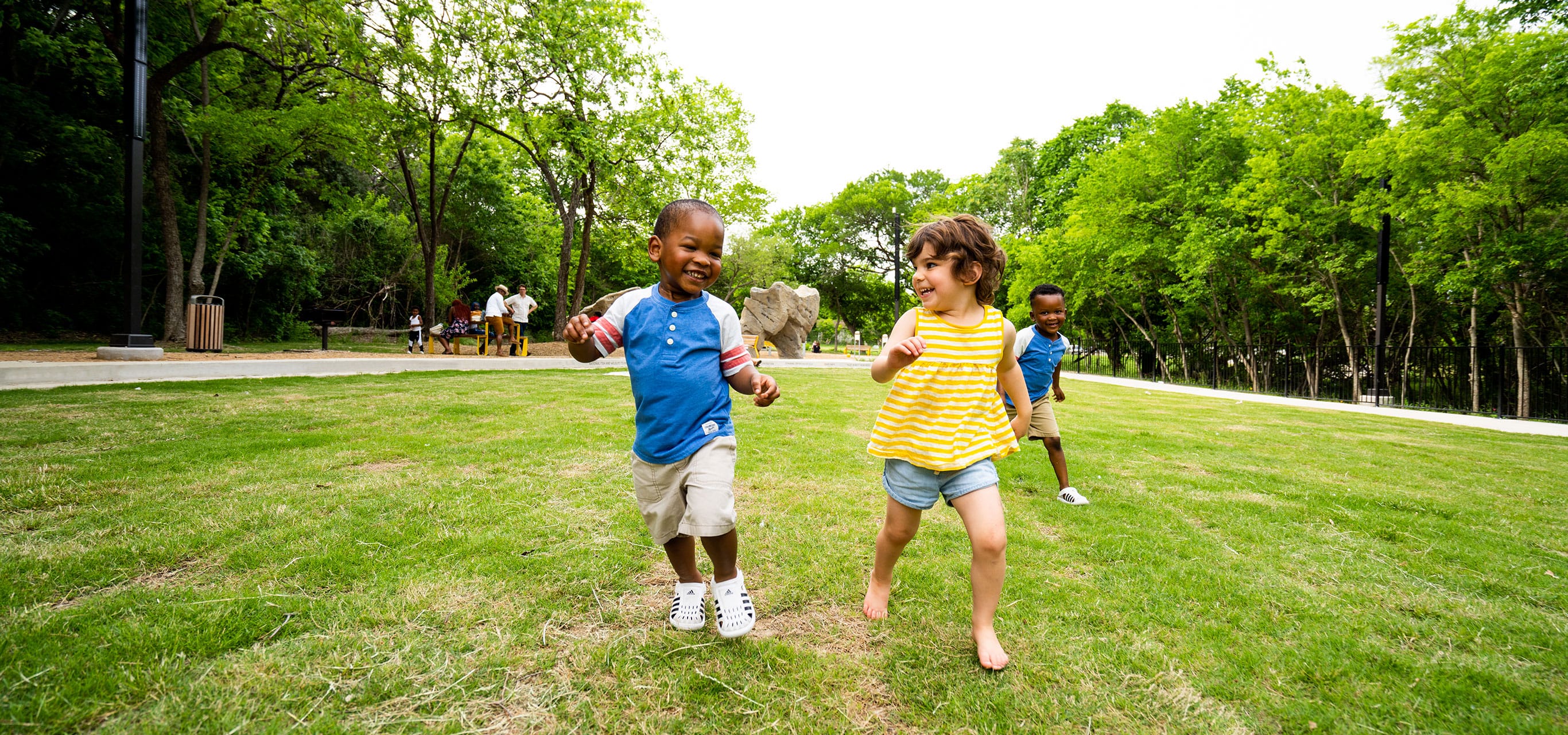
‘Colorful, bright, and full of fun’
‘Colorful, bright, and full of fun’
At recess—as in life—everyone falls down sometimes. But until recently, taking a tumble at William Dick School in north Philadelphia could earn you some particularly nasty scrapes and bruises. The schoolyard was more vacant lot than playground, says Principal Amy Williams. “The kids would go out and play football, and they’d just be landing straight on concrete.”
To change that, The Trust for Public Land helped students design a new, greener place to play. Opened in 2014, the schoolyard now includes a big garden and trees for shade. The broken asphalt is gone; the safer play surfaces and a cushiony turf field in its place make for softer landings.
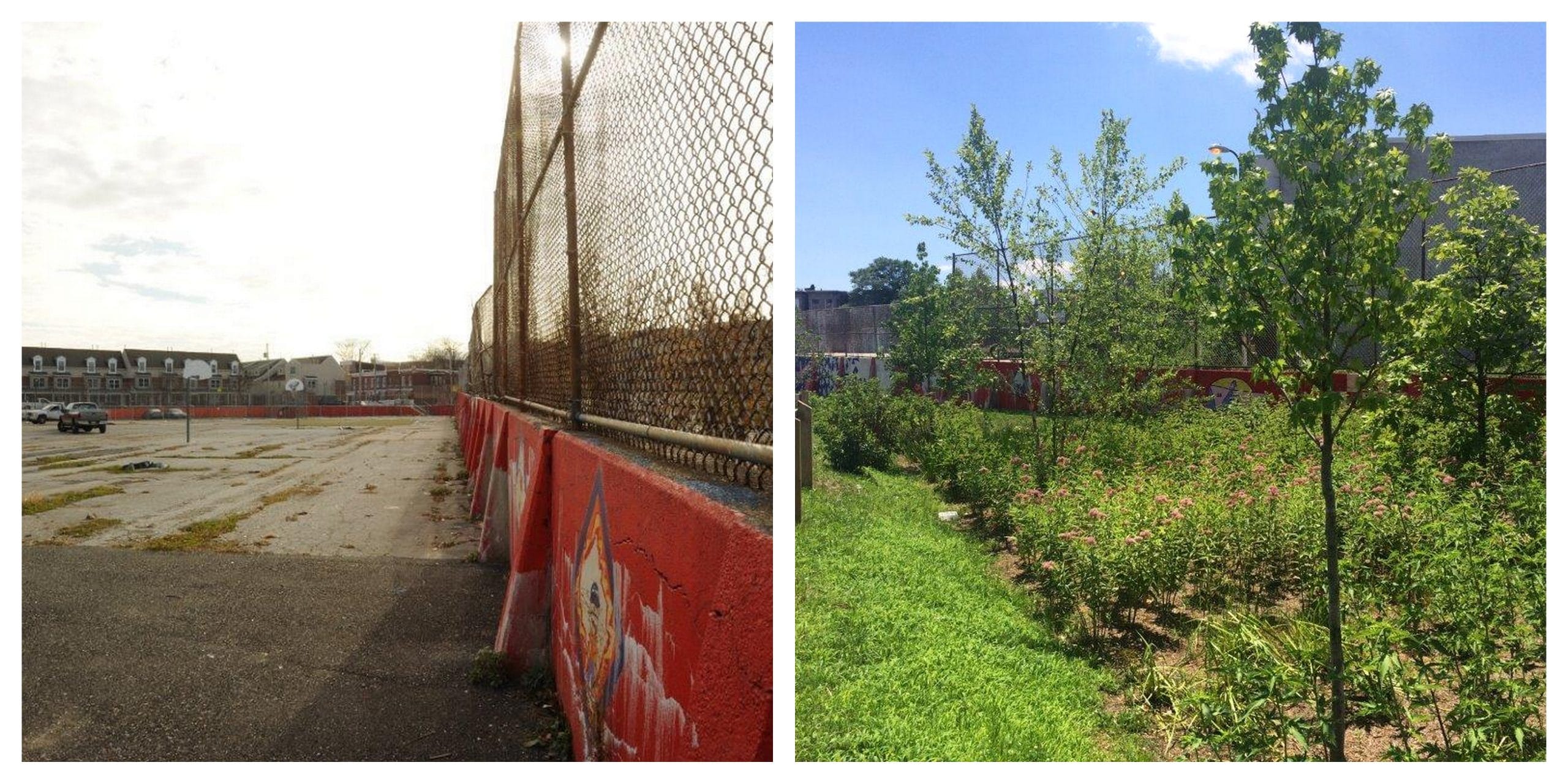
The greener schoolyard at William Dick is also part of a plan to clean up Philadelphia’s waterways.
In periods of heavy rainfall, the city’s aging sewer system struggles to manage the rush of water flowing down its drains. “We end up with diluted sewage running right into our rivers,” says Maggie Dunn, a community planner with the Philadelphia Water Department.
To relieve the strain on treatment facilities and the Delaware and Schuylkill rivers, the department could spend $10 to $13 billion upgrading “gray infrastructure” like concrete storage tanks and tunnels. Instead, planners are turning to a green infrastructure strategy estimated at $2 billion, a fraction of the cost.
Ripping up hard surfaces like asphalt and replacing them with plants, trees, soil, and stone allows rain to soak into the ground, helping filter out pollutants before they reach the rivers. To meet its clean water goals this way, Philadelphia will have to green about 9,500 acres—a challenge in such a densely built city. Schoolyards like the one at William Dick are a critical piece of the puzzle.
“Right now the typical schoolyard in Philly is just asphalt, and it’s usually in bad shape,” says Helaine Barr, a policy analyst with the water department. “But they’re often the only open spaces in dense neighborhoods, so they offer a great opportunity to capture stormwater.”
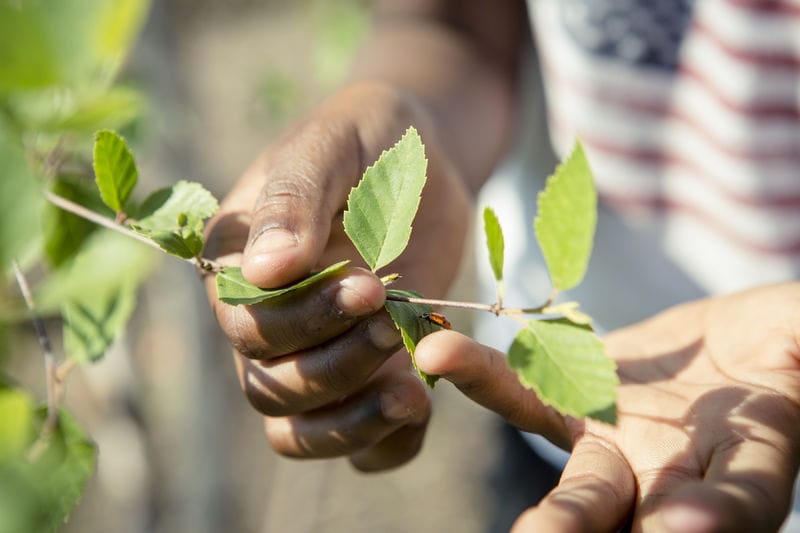
In the coming years, we’ll work with the city to design and build 25 new playgrounds, adding green infrastructure while brightening the recess hour for kids across the city.
At William Dick School, Principal Williams says injuries are down and happiness is up since the playground reopened. And the fun doesn't stop when class lets out: the schoolyard stays open to the neighborhood in off-hours. “You walk past on a weekend and see kids playing basketball and football. Parents are bringing their kids to the park to play— something they didn’t have as a community prior to this,” she says. “We’re seeing a lot of cool, positive things that we didn’t expect to come out of this playground.”
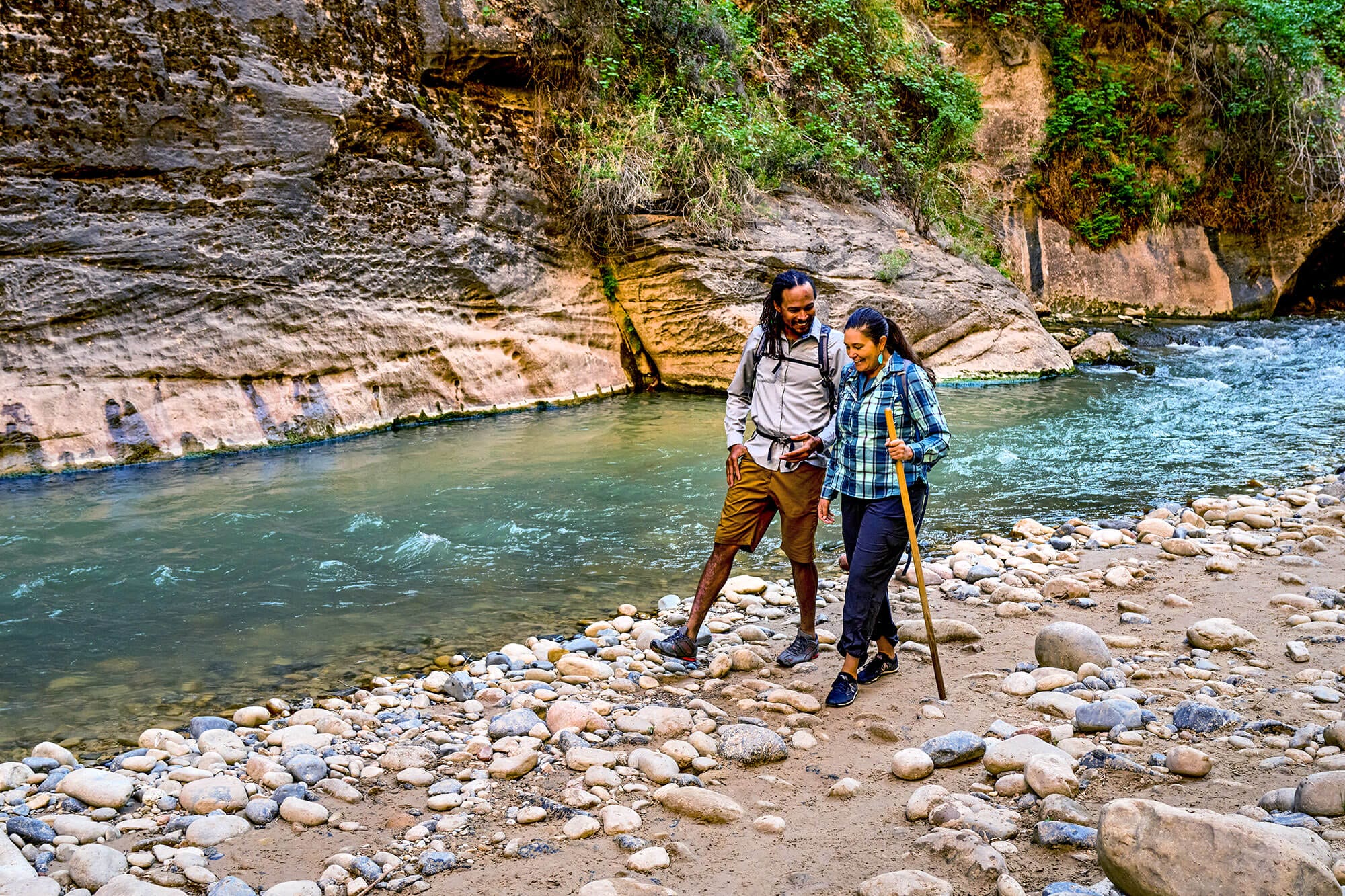
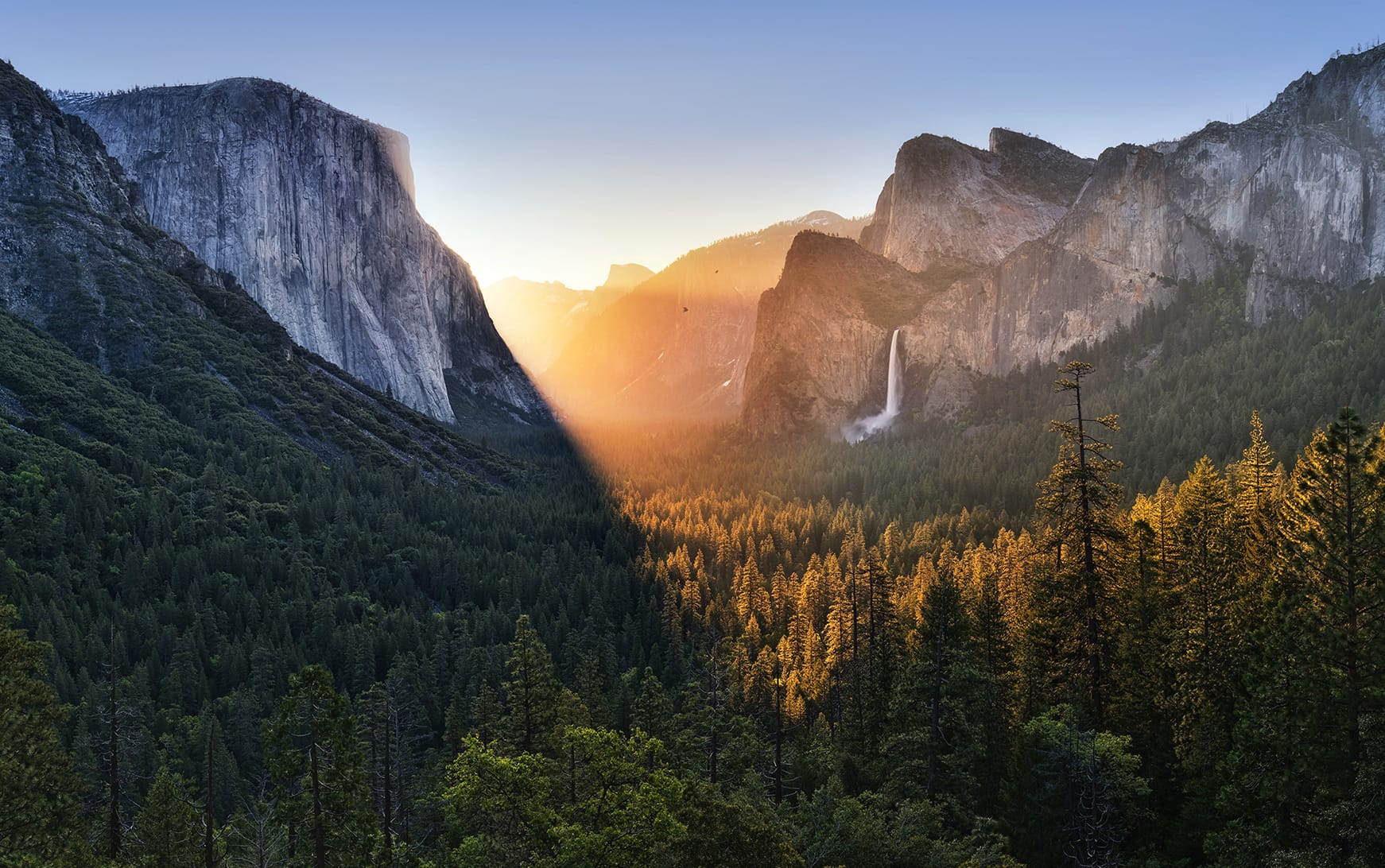
Donate to become a member, and you’ll receive a subscription to Land&People magazine, our biannual publication featuring exclusive, inspiring stories about our work connecting everyone to the outdoors.
See how our supporters are helping us connect people to the outdoors across the country.




